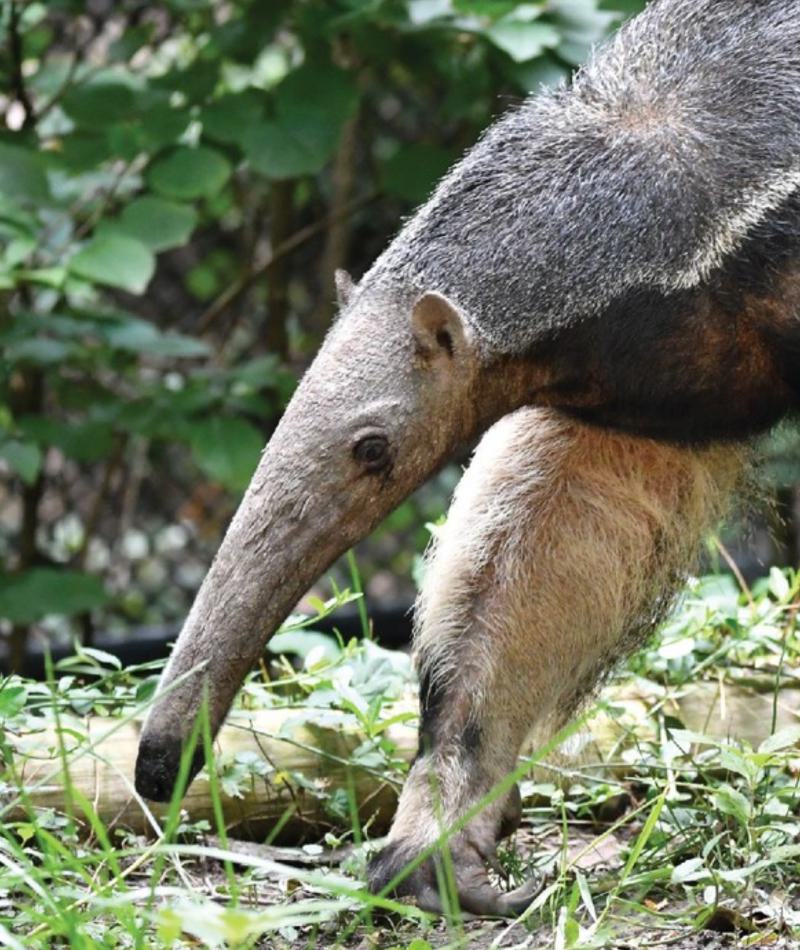
Giant Anteater
Myrmecophaga tridactyla
Did you know?
- Giant anteaters are part of the Myrmecophagidae family, along with other anteaters.
- They are the largest of the four anteater species.
- They live in swamps, humid forests and savannahs in Central and South America.
- A giant anteater’s tongue can be two feet long.
- After a six-month pregnancy, a female gives birth to a single baby.
Adaptations
Giant anteaters have iconic long snouts and long tongues, which help them slurp up their favorite foods, ants and termites. Though their eyesight is poor, they have a great sense of smell. They have long hair on their tails so that they can use their tails as shade or blankets. They have long, sharp claws, which help with digging into termite and ant mounds. Their claws and thick coat also help against natural predators, of which they have only two: jaguars and pumas.
Social Structure
Giant anteaters are solitary animals, unless there is a mother and baby pair. The season for anteater mating is fall. After a pregnancy of some six months, a female gives birth to a single baby in the spring or summer. The birth takes place in a sheltered place, like a thick clump of shrubs. The newborn has sharp claws and can crawl onto its mom's back shortly after being born.
Threat Level
- Unknown
- Common
- Near Threatened
- Threatened
- Endangered
- Critically Endangered
- Extinct in the Wild
Near Threatened
The Giant Anteater is likely to qualify for threatened category in the near future, perhaps very quickly depending on local development projects such as rainforest logging.
Range
Central and South America (southern Belize to northern Argentina)
Habitat
Swamps, humid forests, savannas

We care about Giant Anteaters
Giant anteaters have disappeared from most of their historic range in Central America, mainly due to human-caused habitat loss. The Saint Louis Zoo participates in the Species Survival Plan for Giant Anteaters, a cooperative breeding program that helps ensure a healthy population of animals. The Zoo also supports a family of Anteaters in River’s Edge.
Learn more about how we are helping wildlife around the world.
Find this animal in River's Edge

SAINT LOUIS ZOO ZONE
River's Edge
Take a journey along a mythical waterway through four continents to discover how wildlife, plants and people interact. River's Edge is the Saint Louis Zoo's first immersion exhibit—a lushly planted naturalistic environment showcasing multiple species from around the world.

